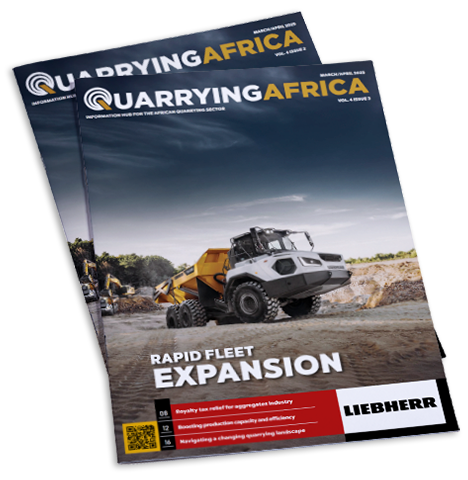Following several recent mining accidents involving trackless mobile machines (TMMs), as well as incorrect lockout procedures of equipment and conveyors, surface mining industry association ASPASA is calling on industry players to improve their safety practices.
The association’s director, Nico Pienaar, says majority of accidents can be avoided by following the requirements of the Mine Health and Safety (MHS) act, supported by the Occupational Health and Safety (OHS) act, in conjunction with the mines and quarries’ own risk assessments.
Surface mines also have the added advantage of measuring compliance by means of ASPASA’s own health and safety audit, which is available to all association members. The mandatory audits measure and provide corrective measures. Consequently, ASPASA members have over the years reported a low level of incidents.
“Providing better health and safety to all on our operations is not a competitive advantage but rather a responsibility that we all need to take seriously. Stipulations in the legislation require that certain procedures and practices be put in place to avoid accidents.
“In most instances, these have come about as a result of previous accidents or where risk assessments have highlighted the need for legislation to prevent accidents. It is therefore critical to study the parts of the legislation that are applicable to surface mines and to each specific mine and to implement the required safeguards.
ASPASA’s carefully compiled health and safety ISHE Audit Protocol was developed to assist and educate ASPASA members with the requirements of the Mine Health & Safety Act, and add value by evaluating compliance and identifying non-conformances for continuous improvement.
More recently, an OHS Audit Protocol was also developed and made available to those members that have other operations within their companies that fall under the requirements of the OHS Act. Major successes have been achieved with the health and safety of employees over many years by compliance to the ISHE Audit Protocol and the same success and added value can be achieved with the OHS Audit Protocol.
The audit also serves as a measure and opportunity to correct non-compliance issues and better prepare for inspections by the Inspectorate from Department of Mineral Resources and Energy (DMRE) and Department of Employment and Labour (DEL).
“We hereby call on all ASPASA members and others in the mining industry to be vigilant on the inspections and testing of all safety devices and to be more thorough in scrutinising the compliance to all Legal and ISHE Audit requirements.
“The Inspectorate from DMRE and DEL will definitely focus on deviations that led to these unfortunate accidents, and we might see more Sec 54 & 55 notices from the DMRE, and Corrective / Non-Compliance notices issued from DEL.
“We would also like to call on members with OHS Act operations to allow ASPASA to audit them and assist them to be fully compliant and ensure health and safety of employees,” concludes Pienaar.






